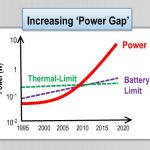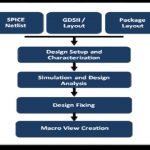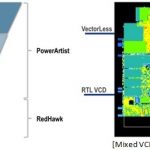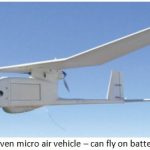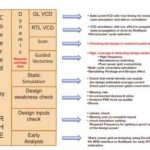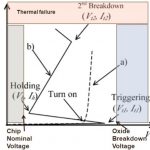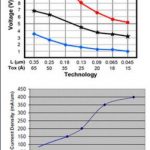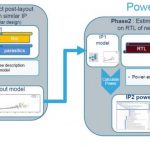Power analysis and reduction for SoC designs is a popular topic because of our consumer electronics dominated economy, and the need to operate devices on a battery source for the maximum time before a recharge. Just from my desk I can see multiple battery-powered devices: Laptop, tablet, smart phone, e-book reader, bluetooth … Read More
Tag: apache
Xilinx & Apache Team up for FPGA Reliability at 20nm
In this age of SoCs with hundreds of IPs from different sources integrated together and working at high operating frequencies, FPGA designers are hard pressed keeping up the chip reliability from issues arising out of excessive static & dynamic IR drop, power & ground noise, electro migration and so on. While the IPs are… Read More
How to meet 3Ps in 3D-ICs with sub-20nm Dies?
It feels to be at the top of semiconductor technology by having dies with high density of semiconductor design at sub-20nm technology node stacked together into a 3D-IC to form a complete SoC which can accommodate billions of gates. However there are multiple factors to be looked at in order to make that successful amid often conflicting… Read More
Dual Advantage of Intelligent Power Integrity Analysis
Often it is considered safer to be pessimistic in estimating IR-drop to maintain power integrity of semiconductor designs; however that leads to the use of extra buffering and routing resources which may not be necessary. In modern high speed, high density SoCs having multiple blocks, memories, analog IPs with different functionalities… Read More
Mission Critical Role of Unmanned Systems – How to fulfill?
Do we ever imagine what kind of severe challenges mission critical unmanned systems in air, land and underwater face? They are limited in space and size; have to be light in weight, flexible in different types of operations and at the same time rugged enough to work in extreme climatic conditions. That’s not enough; amidst these … Read More
How to Assure Quality of Power and SI Verification?
As power has become one of the most important criteria in semiconductor design today, I was wondering whether there is a standard set for the power verification for an overall chip. We do have formats evolved like CPF and UPF and there are tools available to check power and signal integrity (SI), however I don’t see a standard objective… Read More
Full Chip ESD Sign-off – Necessary
As Moore’s law keeps going, semiconductor design density on a chip keeps increasing. The real concern today is that the shrinkage in technology node has rendered the small wire geometry and gate oxide thickness (although fine in all other perspectives) extremely vulnerable to ESD (Electrostatic Discharge) effects. More than… Read More
Layout-based ESD Checking Methodology at Nvidia
The company Nvidiais synonymous with designing all things video and GPU, so I watched Ting Ku, director of engineering at an archived webinar today talk about: Comprehensive Layout-based ESD Check Methodology with Fast Full-chip Static and Macro-level Dynamic Solutions.… Read More
ST Endorses PowerArtist with ARM Cores & FDSOI libs
It was an interesting webinar I attended, presented by STMicroelectronicson how they are benefited in power saving and thermal dissipation by using FDSOI technology and also by using PowerArtist in their design. So, it’s an advantage from both sides – semiconductor technology and semiconductor design tool. It’s worth attending… Read More
Low-Power Design Webinar – What I Learned
You can only design and optimize for low-power SoC designs if you can actually simulate the entire Chip, Package and System together. The engineers at ANSYS-Apachehave figured out how to do that and talked about their design for power methodology in a webinar today. I listened to Arvind Shanmugavel present a few dozen slides and… Read More


